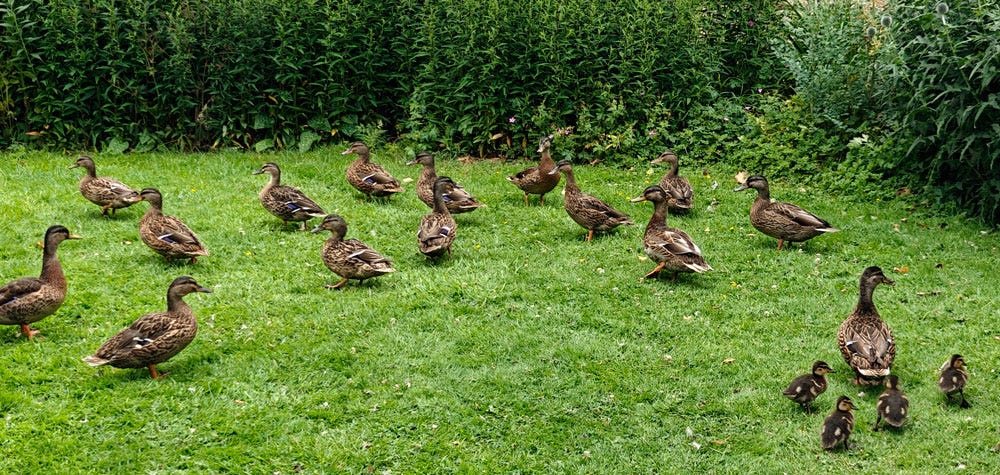Waddling Duck!
A #PaperAuomata project
Make your own waddling duck automaton! Crank the handle and bring this cheerful character to life, watch as it bobs, and waddles with a delightful movement. Whether you're a seasoned maker or just curious to try, this hands-on project is a joy to build. The downloadable PDF includes everything you need to print, cut, and assemble your duck at home. No pond required.
If you enjoy projects like this, you might like the premium version of my newsletter.
As a Premium subscribers you can download the full Duck project PDF. including all the parts and instructions, from the foot of this page. Thank you for your support!
If you’re not a subscriber, the file is also available for £5 (or equivalent) from my website.
Alternatively, there’s a membership option on my website that gives you access to this duck and hundreds of other projects, all ready to download and make, no extra cost, just endless tinkering.
Everyone gets the story, the sketches, and the joy of the build in he newsletter but if you want the printable parts, that is how you get them.
This particular duck started life as a birthday present for my dad. He has wild ducks that visit his garden—what began as one or two curious guests soon turned into a small, waddling flock as word of his generous feeding spread through the duck community. I wanted to make something that captured that gentle chaos: the flurry of feathers, the hopeful eyes, the quiet joy of unexpected visitors. So this automaton is a little tribute to that garden gathering, a duck with a determined waddle and a beak full of optimism.
Originally, I’d thought about making a paper version of my running goose model but with a duck character.
In that one, the feet are driven by a wire double crank, giving the goose a wonderfully menacing charge as if it had spotted an unattended sandwich. But for this project, I set out to recreate the same lively motion using only paper, rather than the bead-and-wire mechanism of the original. It became a gentle challenge: could I capture that same sense of movement and character, but with simpler materials and a more approachable build?
The legs were looking promising, and the simple knee joints worked surprisingly well.
But things got interesting when I added the body. In the goose model, the body is held steady by a couple of struts connecting the wings to the base, a neat solution, but not one that translated easily to this paper version. It kind of worked… if I held the box with one hand, cranked the handle with a second, and held the body in position with a third. Not exactly ideal, unless you’re an octopus with a passion for automata.
So, in a sort of inversion of the mechanism, and with a nod to how the double ducks model worked, I flipped the moving parts. Rather than connecting the feet directly to the crank, I added a box and a pair of pushrods. The duck would sit on top, riding the motion from below like a passenger on a hidden engine. It felt like the mechanism was wearing its trousers inside out, but it worked.
So, to the completed project. The picture on the side of the box is a collage my partner made as a birthday card for my dad, also duck-themed, naturally. It adds a lovely personal touch, and ties the whole thing together with a bit of whimsy and warmth. I think it all came together quite nicely in the end! Quack quack!
Thanks so much for subscribing and for following along with these slightly improbable adventures in paper and motion. Whether you’re here for the mechanisms, the stories, or just the ducks, I’m glad you’re part of it.
It’s a duck, it’s a gift, it’s a slightly improbable machine, and I’m really rather fond of it.
Until next time, happy making, and may your crank handles turn smoothly and your glue always stick.








